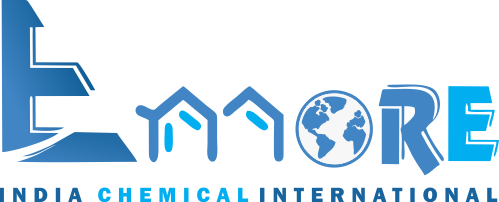Acetic acid supplier in Chennai Tamilnadu india
Acetic acid is also known as ethanoic acid, ethylic acid, vinegar acid, and methane carboxylic acid; it has the chemical formula ofCH3COOH (molecular weight of 60.05).
Glacial acetic acid is the pure compound (99.8%), as distinguished from the usual water solutionsknown as acetic acid. It is a colorless liquid with a pungent, vinegar-like odor, and has an upper taste threshold of 1,000 parts per million
(ppm), a lower taste threshold of 300 ppm, and an odor threshold of 24 ppm. The boiling point of acetic acid is 118°C and the melting pointof its rhombic crystals is 16.6°C. Glacial acetic acid is highly corrosive to metals. Acetic acid is soluble in alcohol, miscible with water,glycerol, ether, acetone, benzene, carbon tetrachloride, and practically insoluble in carbon disulfide.
PRODUCTION AND USES
Commercial production of acetic acid is often accomplished by a chemical reaction of methanol and carbon monoxide (with catalyst).Other production methods include liquid- and vapor-phase oxidation of petroleum gases (with catalyst), oxidation of acetaldehyde, andfermentative oxidation of ethanol. Acetic acid is the 33rd highest-volume chemical produced in the United States.Acetic acid is used in the manufacture of acetic anhydride, cellulose acetate, vinyl acetate monomer, acetic esters, chloracetic acid, plastics,dyes, insecticides, photographic chemicals, and rubber. Other commercial uses include the manufacture of vitamins, antibiotics, hormones,and organic chemicals, and as a food additive (acidulant). It is also used in various textile printing processes. Vinegar and “dilute acetic acid”are about 4% to 6% acetic acid. Essence of vinegar is 14% acetic acid.
HEALTH EFFECTS
Humans
Acetic acid is a strong eye, skin, and mucous membrane irritant. Prolonged skin contact with glacial acetic acid may result in tissuedestruction. Inhalation exposure (8 hours) to acetic acid vapors at 10 ppm could produce some irritation of eyes, nose, and throat; at 100ppm marked lung irritation and possible damage to lungs, eyes, and skin might result. Immediately dangerous to life or health (IDLH)
vapor concentrations of 1,000 ppm cause marked irritation of eyes, nose and upper respiratory tract and cannot be tolerated. Thesepredictions were based on animal experiments and industrial exposure. Skin sensitization to acetic acid is rare, but has occurred.It has been reported that, in 12 workers exposed for two or more years to an estimated mean acetic acid airborne concentration of 51ppm, there were symptoms of conjunctival irritation, upper respiratory tract irritation, and hyperkeratotic dermatitis. Exposure to 50 ppmor more is intolerable to most persons and results in intensive lacrimation and irritation of the eyes, nose, and throat, with pharyngealedema and chronic bronchitis. Unacclimatized humans experience extreme eye and nasal irritation at concentrations in excess of 25 ppm,
and conjunctivitis from concentrations below 10 ppm has been reported. In a study of 5 workers exposed for 7 to 12 years toconcentrations of 80 to 200 ppm at peaks, the principal findings were blackening and hyperkeratosis of the skin of the hands, conjunctivitisbut no corneal damage), bronchitis and pharyngitis, and erosion of the exposed teeth (incisors and canines).

